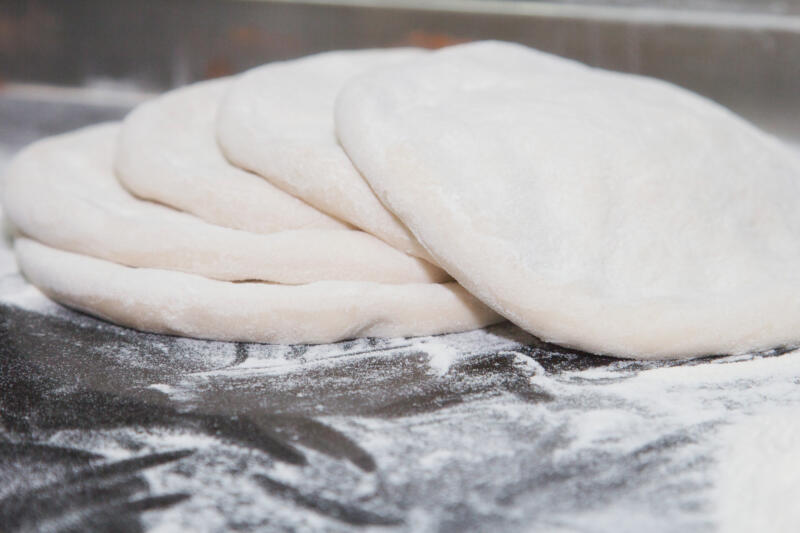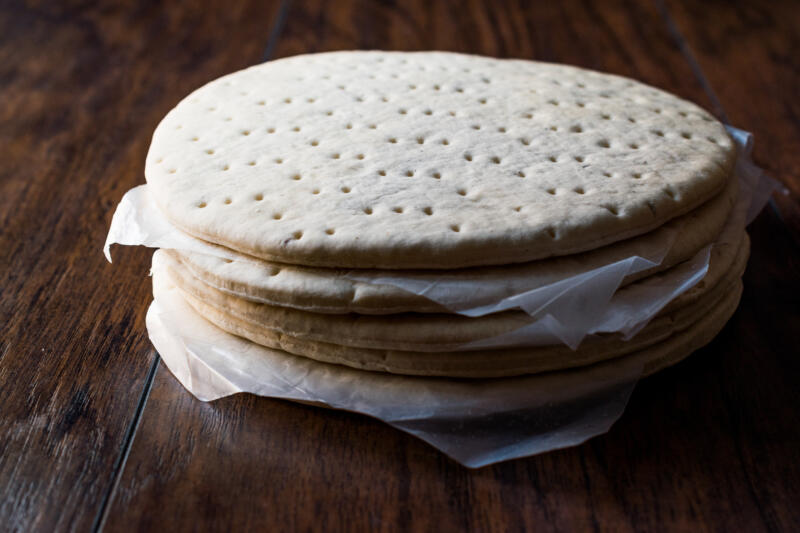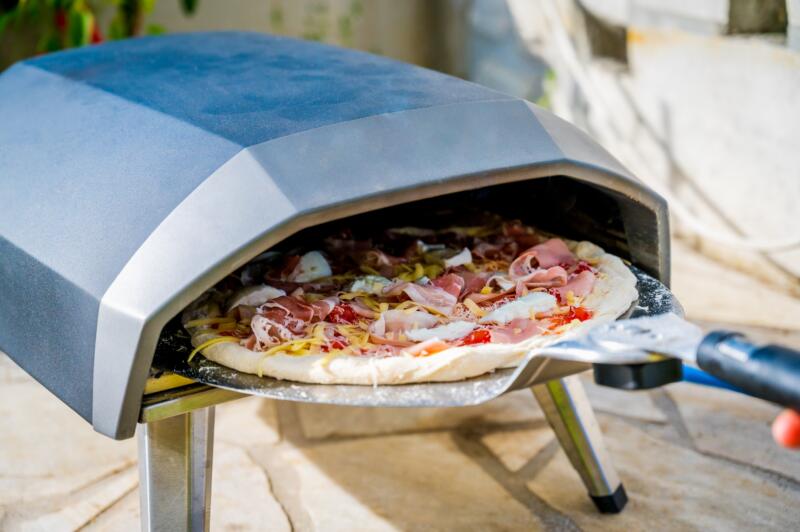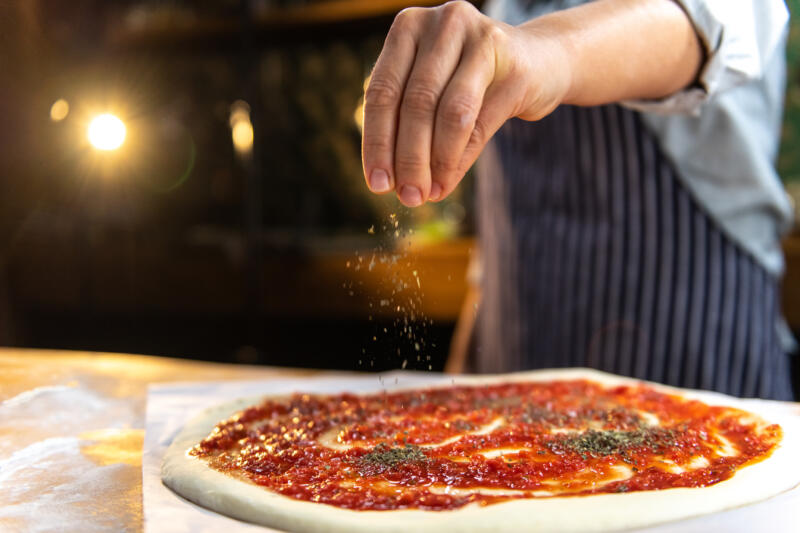You know, there’s something truly magical about pulling a homemade pizza out of the oven. The smell of the bubbling cheese, the sight of the perfectly browned crust – it’s enough to make your mouth water.

But let’s be honest, making pizza from scratch can be a bit of a hassle, especially when you’re short on time or don’t have the right ingredients on hand.
That’s where making pizza with store-bought dough comes in.
It’s all the joy of a homemade pizza, without the fuss of making the dough from scratch.
And trust me, with the right techniques and a little creativity, you can create a pizza that’s just as delicious as any pizzeria’s.
In this article:
Types of Store-Bought Dough

When it comes to making homemade pizza, one of the first decisions you’ll need to make is what type of dough to use.
There are several types of store-bought dough available, each with its own unique characteristics and benefits.
1. Refrigerated Dough
Refrigerated dough is a popular choice due to its convenience and versatility.
This dough is ready to use straight from the fridge, making it a great option for those spontaneous pizza nights. It’s typically found in the refrigerated section of your local grocery store.
Refrigerated dough often provides a fresher taste and a more traditional pizza crust texture.
2. Frozen Dough
Frozen dough, on the other hand, requires a bit more planning as it needs time to thaw before use.
However, it’s an excellent option for those who like to plan their meals in advance. You can find it in the frozen foods aisle of most supermarkets.
3. Local Pizzerias’ or Bakeries’ Dough
Lastly, many local pizzerias and bakeries sell their own dough, giving you the chance to bring a taste of your favorite pizza joint right into your own kitchen.
This type of dough often comes with the added benefit of being made with high-quality ingredients and traditional methods.
Choosing the Right Dough

Choosing the right dough is not just about picking the first dough you see on the shelf; it’s about considering the following:
- the type of crust you want,
- the flavor you’re after,
- the nutritional content that suits your diet.
Type of Crust: Thick or Thin?
The type of crust you prefer can significantly influence your choice of dough.
Do you love a thick crust that’s chewy on the inside and crispy on the outside with a beautiful caramelized bottom?
Or do you prefer a thin crust that’s tender yet sturdy enough to hold your favorite toppings, with a cracker-like crunch around the edges?
For a thick crust, look for doughs that are labeled as “deep dish” or “pan pizza.” These doughs are designed to rise and create that fluffy interior you’re after.
For a thin crust, opt for “thin crust” or “Italian style” doughs. These are typically rolled out thinner and bake up crisp and light.
Different Flours and Their Effects on Taste
The type of flour used in the dough can greatly affect the taste and texture of your pizza crust.
The most common types of flour used in store-bought pizza dough are all-purpose flour, bread flour, and whole wheat flour.
All-purpose flour is a versatile choice that yields a tender crust with a mild flavor.
Bread flour, on the other hand, contains more protein, resulting in a chewier crust with a slightly nutty flavor.
Whole wheat flour adds a robust, earthy flavor to the crust and also increases its nutritional content.
Playing around with various flours can elevate the flavor and texture of your homemade pizza.
Thus, venture out and sample different store-bought doughs until you discover the one that resonates with your palate.
Nutritional Value
Nutrition is another important factor to consider, especially if you’re mindful of your diet.
Some doughs may have higher fat and sodium content than others. To make healthier choices, look for doughs that are lower in fat and sodium.
Also, consider doughs made with whole grains, as they tend to be higher in fiber and other nutrients.
Avoid doughs that contain artificial preservatives.
Look for doughs that are labeled as organic or non-GMO, if these factors are important to you.
Remember, the best pizza is the one that satisfies your taste buds while aligning with your dietary needs and preferences.
Preparing the Perfect Pizza at Home

Now that we’ve covered the different types of store-bought dough and how to choose the right one, let’s dive into the fun part – preparing your perfect pizza at home.
Setting Up Your Work Area
Before you start making your pizza, it’s important to set up your work area.
You’ll need a clean flat workspace, such as a kitchen counter or a large cutting board.
Have a small bowl of semolina or cornmeal flour handy for dusting your surface and preventing the dough from sticking.
If you’re planning to bake your pizza on a pizza stone or on a baking sheet, have it ready as well.
Having these items prepared before starting the dough preparation process will make the process smoother and more enjoyable.
Working with the Dough: Kneading, Rolling, and Stretching Techniques
When it comes to working with the dough, there are a few techniques to master.
Start by letting your dough warm up a bit if it’s been in the fridge. Cold dough is harder to shape and may shrink back as you roll it.
Dust your work surface with flour and begin to shape your dough into a ball.
Use a rolling pin to roll out the dough, applying even pressure and working from the center outwards.
Should the dough begin to cling, sprinkle in some additional flour.
Preheating the Oven
The right oven temperature can significantly affect the texture and taste of your pizza.
Most pizzas bake best in a very hot oven, so preheat your oven to its highest setting, usually around 500°F (260°C), at least 20 minutes before you plan to bake your pizza.
Adding Toppings
Once your crust is shaped, it’s time to add your toppings.
Traditional toppings include pizza sauce, mozzarella cheese, and meats like pepperoni and ham.
But don’t be afraid to experiment with other toppings like jalapenos, chili flakes, banana peppers, diced tomatoes, basil, fennel, ground beef, and Canadian bacon.
The sky’s the limit when it comes to topping your pizza!
Baking for Optimal Crispiness and Taste
Baking your pizza at the right temperature and for the correct amount of time is crucial for achieving a crispy crust and perfectly melted cheese.
If you’re using a pizza stone or baking sheet, preheat it in the oven before placing your pizza on it.
This will help achieve a crispy bottom crust.
Place your pizza in the already warmed oven and let it bake for roughly 10-15 minutes, ensuring the crust turns a golden hue and the cheese becomes bubbly with a hint of browning.
Given the uniqueness of each oven, it’s essential to monitor your pizza closely to avoid overcooking.
Quick and Easy Ideas for Making a Great Pizza with Minimal Ingredients and Time

Making a great pizza doesn’t have to be complicated or time-consuming. Here are some quick and easy ideas for creating a delicious pizza with minimal ingredients:
Classic Margherita
Use a store-bought crust, spread some pre-made tomato sauce, sprinkle mozzarella cheese, and top with fresh basil leaves when it is baked. Simple yet delicious!
BBQ Chicken Pizza
Spread some BBQ sauce on your crust, add shredded chicken, red onion slices, and mozzarella cheese for a tangy and savory pizza.
Veggie Delight
Spread some pesto sauce on your crust, and top with your favorite veggies like bell peppers, mushrooms, olives, and spinach.
Sprinkle on some feta cheese for a hint of the Mediterranean. The joy of homemade pizza lies in personalizing it to your taste.
Don’t be afraid to experiment with different sauces, cheeses, and toppings to create your own unique pizza.
Frequently Asked Questions

Does Store-Bought Pizza Dough Need to Rise?
One common question when using store-bought pizza dough is whether it needs to rise before use. The answer is it depends on the type of dough.
The process of dough rising, also known as proofing, allows the yeast to create gas, resulting in a dough that is light and fluffy with a delicious flavor.
Some store-bought doughs are pre-proofed, meaning they’ve already been allowed to rise and are ready to use straight from the package.
Others may benefit from a bit of extra rising time at room temperature to achieve a lighter, airier texture.
Always check the instructions on the package for optimal results.
Can You Use Store-Bought Dough for Pizza Oven?
Yes, you can definitely use store-bought dough in a pizza oven!
Pizza ovens are designed to cook at very high temperatures, which can give your pizza a beautifully crisp crust and a perfectly melted cheese topping.
However, because pizza ovens are hotter than conventional ovens, you’ll need to keep a close eye on your pizza to prevent it from burning.
It’s also a good idea to let your dough come to room temperature before stretching it out and placing it in the oven, as this can make it easier to handle and result in a better texture.
What Temperature Do You Cook Store-Bought Pizza Dough?
The ideal temperature for cooking store-bought pizza dough can vary depending on the specific dough and your oven, but a general guideline is to preheat your oven to its highest setting, usually around 500°F (260°C), for at least 20 minutes before baking your pizza.
This intense heat ensures a crust with a perfect crunch and toppings that are beautifully caramelized.
Can I Use Pizza Dough Straight from the Fridge?
While it’s possible to use pizza dough straight from the fridge, it’s generally easier to work with and results in a better texture if you let it come to room temperature first.
Cold dough can be more difficult to stretch and shape, and it may shrink back more during baking.
To avoid this, take your dough out of the fridge and let it rest at room temperature for about 20-30 minutes before you start shaping it.
This ensures the dough becomes more flexible and user-friendly, leading to a superior pizza outcome.
Closing Thoughts
Making pizza with store-bought dough doesn’t just save you time, it also opens up a world of possibilities for customization and creativity. So why not give it a try?
Experiment with different types of dough, play around with unique toppings, and most importantly, have fun with it.
After all, pizza is meant to be enjoyed.